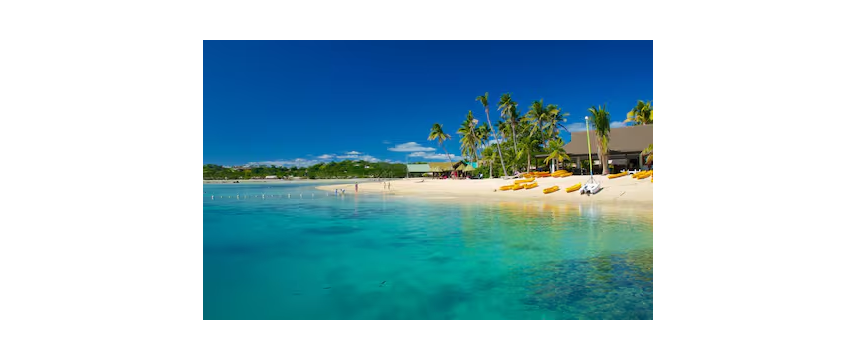Stella Mascarenhas-Keyes’ work on Goan migration refers to small Goan populations in “outposts” like Fiji, East Africa, and Burma

If, like me, you tune in the radio soon after waking up, then you would have been hearing a lot about Fiji on your airwaves. Anyway, I doubt that there are many surviving hardcore radio fans remaining, other than those listening in their cars, for pure entertainment and music. Official, state-run radio has become suffused with sarkari propaganda (not that it wasn't in the past, but not to such levels), politics and even an overdose of religiosity.
But back to Fiji. What's up with this remote island country, which comprises some 330 islands, located nearly 2000 km from New Zealand? Europeans first visited the nation in the 17th century, we're told (online).
There are so many stories from history. How the region's name of Viti got mispronounced (by their neighbours in Tonga) as Fisi, and the Whites turned it into Feejee and then Fiji. Natives were accused of cannibalism, and this was used as excuse to colonise them.
Rising prices of cotton during the American Civil War (1861-65) led to seeing Fiji, among others, as an option. Britain decided to import 'indentured labourers' in the late 1870s. This continued till 1916, and some 42 ships made 87 voyages overall.
Today, the country of under one million is made up of 54.3% native Fijans (Melanesians, or of Polynesian ancestry) and 38.1% of Indo-Fijans. The latter are descendants of Indian contract labourers, brought to the islands by the British colonial powers mostly in the 19th century.
Surprisingly, Indo-Fijans constituted a majority of Fiji's population between 1956 and the late 1980s. Most trace their roots to the Hindi belt of Awadh-Bhojpur in North India. They speak a language called Fiji Hindi (or 'Fiji Baat') that is based on the Awadhi dialect, with an influence of Bhojpuri.
So, where's all
this going? (subhead)
This week, the Fijian Prime Minister Sitiveni Rabuka, CF OBE MSD, is visiting India. The politician, sportsman and former soldier, was someone whose name rang a bell. Since the 1980s, when we were young and with few distractions, he had been in the news from across the oceans.
Rabuka is on a three-day visit to India, and, therefore, at the centre of some radio news bulletins. The goal? Shoring up bilateral ties "in areas such as trade and investment".
One had to do a bit of online searching to recall in what context he had made the news four decades ago. Rabuka was the instigator of two military coups in 1987, then got elected as the Prime Minister of Fiji (1992-1999, and since 2022). He was also the Opposition leader for some time. In short, a colourful character.
Having said all that, listening to the news this morning wasn't just going down memory lane..
Fiji, like tiny Goa, is hardly in the news. Not surprisingly so. Its population is actually a little over nine lakh. This makes it a country even smaller (in population) than Goa! Once in a way, like Goa, it makes it to the headlines, when there is some bizarre conflict, strife or even a military coup. (Coups here are still mostly political, though.)
Fiji, like Goa, is struggling to cope with its own history. In their case, it is a conflict and clash between two different ethnic groups, one brought in from thousands of kilometres away (over 12,000 kms) as indentured labour, as the sugar economy demanded that. In Goa's case, we may not have ethnic differences, but do have divergences in language, culture, etc, which is, again, based on our own history.
Fijians fear being swamped, population-wise. That is true not just about Goa, but among many parts of India. This has led to a rise of nativist, maybe even right-wing, politics.
Once in a way, leaders from these tiny regions get their place in the sun. Maybe, as some Third World proponents argued in the 1980s, the news-media should change its priorities. In a way to ensure that it's not only disaster that grants headlines to the less-affluent world.
Finally, back to the starting point. Working to complete a modest book on the Goan Daizpora (my preferred spelling), I couldn't but help wonder if there are any Goans based in Fiji. There seem to be Goans in almost every part of the globe, with very few keeping track of these communities (as Adv Radharao Gracias has been doing for a long time now). There are Goans in Macao (of course) and one could track down a couple, some years ago, even in the Seychelles. But in Fiji?
Online sources suggested there would be, but were not specific in their details. Goan migration to various parts of the British colonial world, in the late 19th and early 20th century, is well known. They went as clerks, teachers, minor civil servants, musicians, sometimes even journalists, or in the medical field. Could some Goans have gone, or got posted in Fiji when it was a British colony (1874–1970)?
Unlike other Indians who went to Fiji as indentured labourers (the "Girmitiyas", a term stemming from "agreement" or "girmit"), Goans might have gone as part of the English-speaking, Christian, professional class. But we don't have details.
Mentions of Goans in Fiji appear occasionally in Goan diaspora histories, often as brief notes. For example, Stella Mascarenhas-Keyes’ work on Goan migration refers to small Goan populations in “outposts” like Fiji, East Africa, and Burma.
So much for the 'small' places of history. They too need their stories to be told. Sitiveni Rabuka might not be a particularly delightful character from history; but since the motherland is making much of him currently, we might as well use this as an excuse to also take a look back.